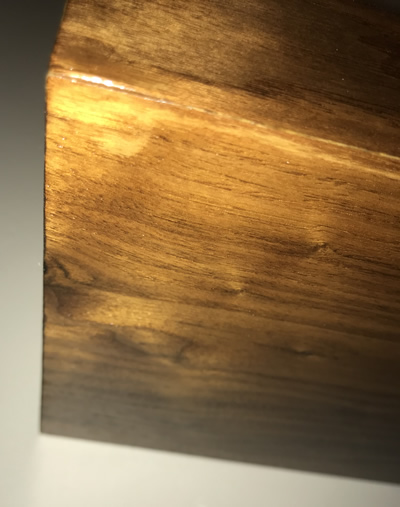Your project may require the use of liquid adhesives for initial or final assembly. There are a wide variety of adhesives available and it is important to read all instructions and use the proper adhesive for the task at hand.
Adhesives before Finishing
Many projects are fully assembled and sanded prior to being finished. Using the proper adhesives for unfinished wood is important to the strength and performance, so read instructions and use products designed for unfinished wood surfaces (i.e. wood glue). Most glues/adhesives should work well under Waterlox products as long as they do not contain any silicone. When coating over other substances, there are two concerns: compatibility and aesthetics.
Compatibility
The compatibility of the adhesive used and the Waterlox products is important in two ways: immediate reactions and adhesion. Most importantly, you do not want the Waterlox product to negatively react with the adhesive to inhibit performance, discolor or other adverse side effects. All Waterlox products contain at least some oil-based solvents. These may degrade, weaken or remove some adhesives or may potentially cause other issues, however once the adhesive cured, this may be rare. Also check to see if the adhesive repels the Waterlox and does not allow it to coat properly. This may indicate there is silicone or it may require some sanding to help promote adhesion of the Waterlox to any exposed adhesive.
Aesthetics
Liquid adhesives are usually not used on the exposed surface of projects, but rather in the joints and hidden surfaces, however, it is important to pay attention to any surface that may have adhesive on it. Pay close attention to joints that may have had glue/adhesive squeeze out when assembled. Waterlox products are oil-based and will enhance and richen the wood when it is applied. If there is any substance in the wood surface, this may not accept the Waterlox in the same way. This can be quite evident on some projects as shown in the picture below (1). A good test is to wipe the raw wood down with some paint thinner/mineral spirits and make sure the wood reacts evenly. If there is discoloration, light sanding may be necessary to expose fresh wood fibers to better accept the Waterlox. Repeat the wiping with mineral spirits until the surface is uniform.

Figure 1
Adhesives after Finishing
Some projects will require installation/assembly after finishing. First and foremost, make sure you are using an adhesive that is intended for finished surfaces. For instance, traditional wood glue works much better on raw wood than finished wood (because you aren’t really bonding to the actual wood fibers anymore). Second, ensure that the adhesive doesn’t negatively affect the Waterlox finish. This would be rare, but some adhesives can have very aggressive solvents that can damage the film. In some instances, they may chemically etch (to a very minor degree), the finished surface to create a better bond between pieces, however, a quick check to see that it doesn’t completely degrade the coating is important.






